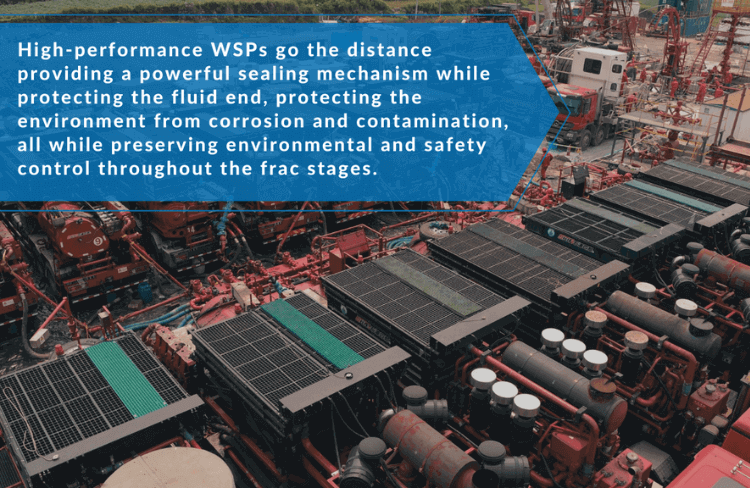This article was recently featured by Hart Energy in the IndustryVoice publication as The Power of the WSP: How quality Well Service Packing improves pressure pumping operations. Mon, 01/24/2022 - 11:00 AM
Gone are the days of the wildcatter. Innovative technology, advanced production techniques, and higher regulatory and safety standards have led to a major evolution in the upstream energy industry. Today, top operators are technology-driven, utilizing quality data including surface topography, subsurface geology, reservoir characteristics, environmental impact reports, and asset management best practices to guide operating decisions. The positive changes are evident in the evolved approach to pressure pumping operations. Production Managers and Maintenance Engineers are focused on optimal efficiency, minimized downtime, and the highest level of safety. Current multi-acre, multi-well pressure pumping projects include longer laterals often exceeding 20 frac stages, frequently utilizing between 15-20 pressure pumping units per fleet. This ambitious approach to pressure pumping requires much more from the equipment and components used on location. Despite the scope and scale of today’s projects, it’s a combination of sealing components called pump packing making a major difference. The industry calls pump packing by the name ‘well service packing’ – or WSP for short. Top operators see the impact the WSPs have not just on the pump, but on the total operation and their operating results. To better see the power of the new WSP, let’s look at the pressure pumping process.
Pressure pumping, also known as hydraulic fracturing, is a well-stimulation technique used to produce natural gas and oil from low-permeability formations like tight sandstone, shale, and some geothermal reservoirs. Natural gas and oil are transferred to the wellbore by way of the fractures created by pumping sand or ceramic proppant slurry using high-pressure pumps (i.e., frac pumps) consisting of a power end and a fluid end. The fluid end is responsible for the high-pressure injection of slurry into the well – all while operating under conditions of extreme stress, high temperatures, and high pressures. Fluid ends are critical to production, but unfortunately, prone to failure. This is where the power of the WSP becomes evident. OEMs can improve fluid end efficiency and reduce overall pump lifecycle costs with the right well service packing.
Well service packing – or WSPs – act as a seal to prevent the high-pressure slurry in the pump from leaking. The packing OD forms a static seal on the pump fluid end, while the ID acts as a dynamic seal on the pump plungers as they reciprocate back and forth on their respective suction and discharge strokes. Pumping media often includes a mixture of water, chemicals, and sand or ceramic proppant. WSPs provide integrity by forming a dynamic seal that prevents fluids and materials from exiting the fluid end in an uncontrolled manner. High-performance WSPs can go the distance providing a powerful sealing mechanism while protecting the plunger and mating surfaces of the fluid end, protecting the environment from contamination, all while preserving environmental and safety control throughout the frac stages.
The entire construction of the WSP impacts its reliability. Material formulation, applications engineering, and product design come together to create WSPs rated for optimal efficiency. Quality WSPs are made from advanced materials engineered to achieve exceptional resistance to friction, pressure, heat, and abrasion. High-performance polymer materials like HNBR, NBR, FKM, PTFE composite, and Aramid have the inherent characteristics to handle the tough conditions of pressure pumping production, which can reach over 180 degrees Fahrenheit, under challenging pressures often exceeding 15,000 psi. High-performance WSPs must be able to withstand the environmental conditions and provide seal integrity throughout frac stages that can run up to 300+ hours. Custom engineered WSPs are designed with the exact ID and OD specifications for the OEMs fluid ends and deliver a unique profile from standard ring construction. Intricacies in design, like an OD lip that removes excess proppant from the wellbore during installation, deliver an additional layer of benefit and protection for the operation. From concept to production, the best WSPs incorporate safety control in every aspect of the manufacturing process.
The safety improvements within the fluid end also translate to safety gains outside the well. By delivering increased uptime and production from the optimized fluid ends, the WSPs also help decrease unplanned maintenance and downtime for packing changes or fluid end failure. The less fluid end failure, the less packing changes, and the less maintenance per pressure pumping interval equal the less the opportunity for accidents and injuries.
The power of the WSP doesn’t stop at safety – it goes all the way to the bottom line. The reduction of lifecycle costs and increases in operating life for the fluid ends translate to significant financial gains for the operator. Total Cost of Ownership (TCO) is improved because stronger fluid end performance drives longer service intervals, yielding greater gas production at a lower all-in cost. If a typical service interval is around 300 hours, and better WSPs can increase run time to 420+ hours before planned maintenance, it’s not difficult to see the impact a superior packing set can provide. This substantial improvement means an operator spends less on equipment and components per hour, per stage, per well. When a pressure pumping multi-well site can have on average 10 wells, the gains compound quickly.
While the technology has not yet delivered fluid ends or well service packing that can offer maintenance-free pressure pumping, the right WSP gets pretty darn close.
